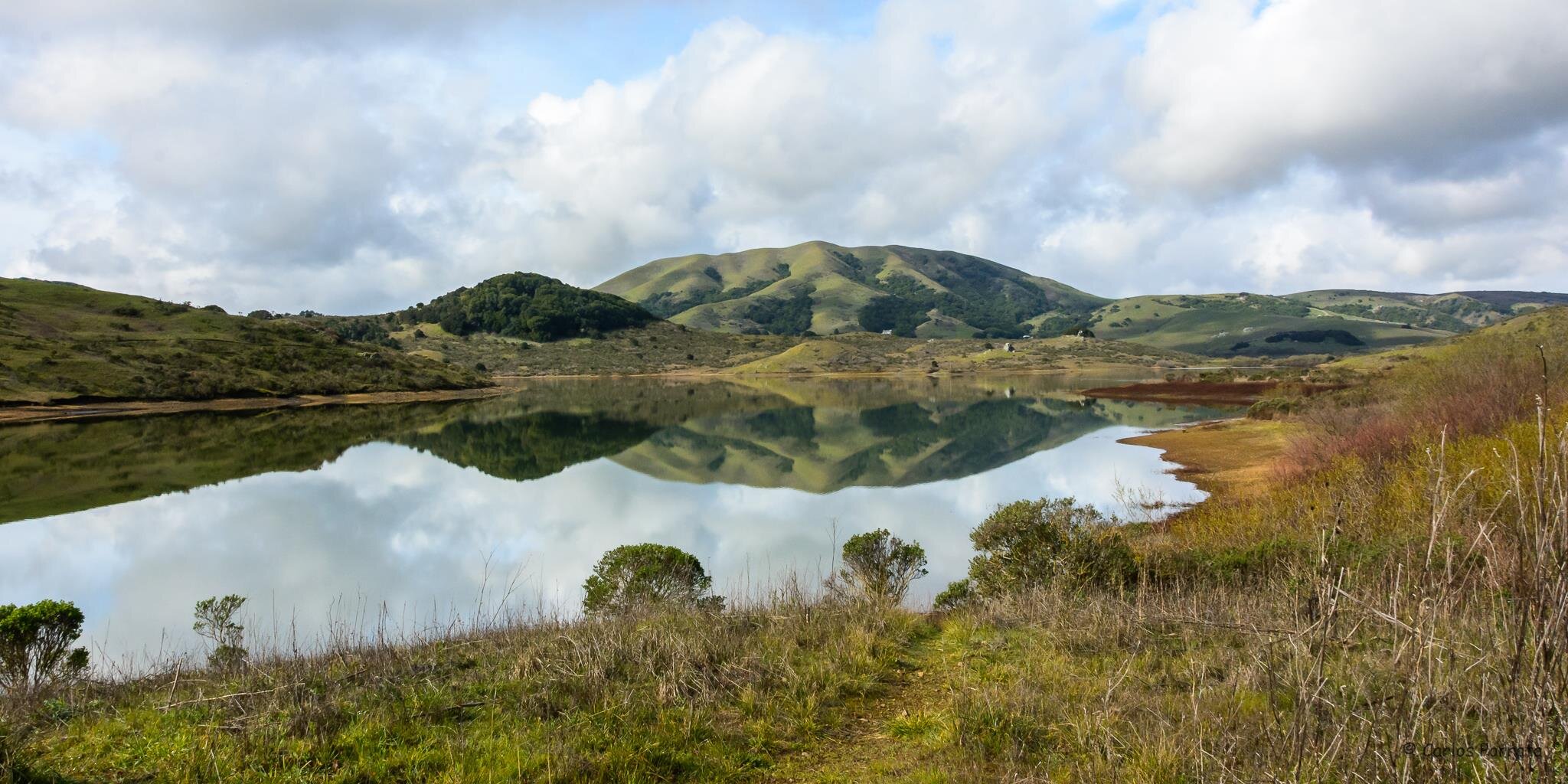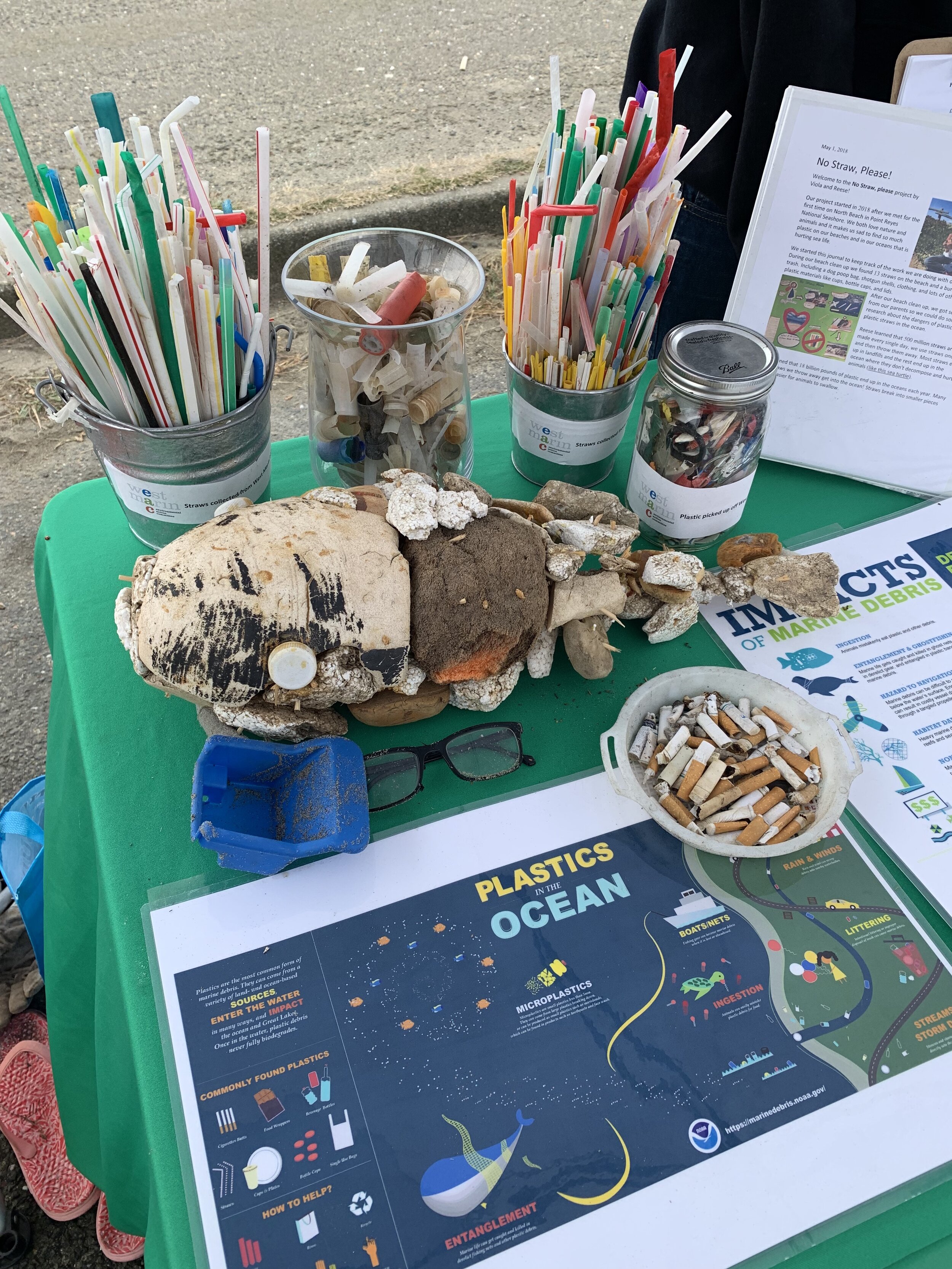Marin County’s water resources include a network of fresh and marine water systems that support globally significant and extraordinarily diverse onshore and offshore habitats. In rural West Marin, there are miles of county, state and federal trails and coastal public access points spanning from Dillon to Muir beaches where one can explore Bolinas Lagoon, Tomales Bay or the vast Pacific Ocean. Off Marin’s shores, one can experience the abundant biodiversity of the Greater Farallones and Cordell Bank National Marine Sanctuaries and the network of California’s Marine Protected Areas.
Since 1971, EAC has protected and sustained West Marin’s vibrant watersheds, including Tomales Bay and Bolinas Lagoon. We accomplish our work by protecting, preserving, and enhancing the unique and vulnerable marine and freshwater resources and habitats of these water bodies; restoring and maintaining water quality; and supporting policies and actions which employ precautionary principles to sustain the complex ecological functions of the watersheds.
Nicasio Reservoir, Marin Municipal Water District.
Photo © Carlos Porrata
Our prior successes include protection of the Estero Americano and Estero San Antonio from land use development and sewage waste, banning the use of jet skis in the Greater Farallones National Marine Sanctuary, protecting eelgrass habitat, securing a Marin County ordinance against offshore oil infrastructure, and the designation of Tomales Bay as the 19th USA Ramsar site, or wetland of international importance (nomination and update). Our current waters campaigns center around Ensuring Resilient Watersheds and Safeguarding our Coast and Ocean.
For nearly fifty years, EAC has been actively bringing people, science, and policy together to champion innovative solutions for local environmental problems. Currently, we are actively engaged in coastal protection policy work and coastal resiliency planning efforts through submitting comments, testifying, community engagement, and participating in stakeholder groups. With climate change, pollution, shifting political priorities, tourism, and other factors impacting our environment, EAC remains fastidious in reviewing and researching issues important to our coastal communities.
Visit some of the links below to learn more about our specific past and current program work.
Resilent Watersheds
HEALTHY FRESHWATER SYSTEMS
Kent Lake Reservoir, Marin Municipal Water District. Photo © EAC
Protecting the health of freshwater resources in Marin County is essential for both human and natural communities. We advocate to protect groundwater, surface water, creeks, rivers, lakes, estuaries and wetlands from pollution, development, and overuse.
PROGRAM AREAS:
• Bringing Beavers Back to Marin
• Release of our March 2021 report: Beneath the Surface: Groundwater, a Proactive Analysis Exploring California and Marin County Water Resilience in a Changing Climate
• Member of the Lagunitas Creek Technical Advisory Committee
• Member of the Marin County Stream Conservation Area Update Working Group
• Release of our November 2025 California Community Water Advocacy Guide
RECREATIONAL WATER QUALITY
Drakes Beach, Water Quality Testing Site. Photo © EAC
One way to ensure our watersheds are clean and healthy is to collect water quality samples. In 2020, we launched two beach testing sites in Point Reyes National Seashore in partnership with Marin County Environmental Health Services and Surfrider Marin.
PROGRAM AREAS:
• Marin County Beach Water Quality Report Card, Testing
Locations: Drakes Beach and Drakes Estero
Safeguarding our Coast and Ocean
ADVOCATING FOR CALIFORNIA’S MPAS
Drakes Beach, State Marine Reserve, Photo © EAC
MPA Watch is a network of programs that support healthy oceans through community science. We train volunteers to observe and collect data on human uses of coastal and marine resources both inside and outside of marine protected areas (MPAs).
PROGRAM AREAS:
REDUCING SINGLE-USE PLASTICS
EAC Plastics Pollution Table Display, Photo © EAC
We are working to protect coastal and marine resources from harmful plastic pollution through public outreach, engagement, and advocacy to stop pollution at the source.
We proudly support youth engagement and advocacy so that the next generation learns the important skills to advocate for themselves to protect what they love.
PROGRAM AREAS:
• Youth Against Single-Use Plastics
• Online Environmental Resources, Visitor Brochure and Stewardship Guide.
HEALTHY TOMALES BAY
Tomales Bay, Photo © Carlos Porrata
We are working to ensure thriving and healthy Tomales Bay watershed ecosystem for current and future generations including opposition to more environmentally damaging and unsustainable forms of aquaculture (pesticides, eelgrass impacts, etc.).
PROGRAM AREAS:
• Marin County, Tomales Dunes (Honor Thy Dunes)
• Giacomini Wetlands, (1972-2007 - external website)
OPPOSING OFF-SHORE OIL
Sunrise Movement Protest, Photo © EAC
In 2016, the Trump Administration launched a campaign to allow offshore oil leases throughout the United States, including the Pacific Coast and Northern California. We are working to protect coastal resources from the threat of offshore oil and gas extraction on the Pacific Coast.
In 2020, thanks to our advocacy, Marin County passed an ordinance banning offshore infrastructure without voter approval, placing a kink in the Trump plans.
PROGRAM AREAS:
Community Engagement
Our staff and board engage in community working, planning, and advisory roles to advance our mission.
Golden Gate MPA Collaborative Network, Leslie Adler-Ivanbrook, Program Director, Term: 2018-current
Lagunitas Creek Technical Advisory Committee, Terence Carroll, EAC Board Member
Marin County Stream Conservation Area Update Working Group, Terrence Carroll, EAC Board Member
Tomales Bay Foundation, EAC Organization, Original Council Member, Ashley Eagle-Gibbs
Advisory Committee
Our Advisory Committee (board, staff, and other stakeholders) provides expertise and advice on the complicated issues facing our lands, waters, and biodiversity in coastal Marin. Their feedback and recommendations help broaden our view and scope when making decisions involving marine, coastal, freshwater systems, including Tomales Bay and Bolinas Lagoon, our local wetlands of international significance, and climate change issues impacting water resources. View our guiding principles for our work on issues facing Tomales Bay, Bolinas Lagoon, and their watersheds.
community Members
Sarah Allen, Ph.D., Retired National Park Service Ecologist
Tom Baty, Recreational Fisherman
Bruce Bowser, Bolinas Community Member
Woody Elliott, Retired, California State Parks Environmental Scientist
Don Neubacher, Retired National Park Service Superintendant
Kevin O’Connor, Program Manager, Moss Landing Marine Labs
Richard Ogg, Commercial Fisherman
Nils Warnock, Ph.D., Director of Conservation Science, Audubon Canyon Ranch










